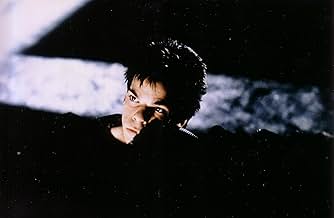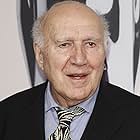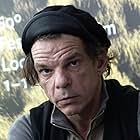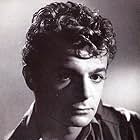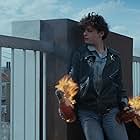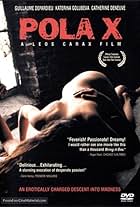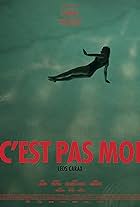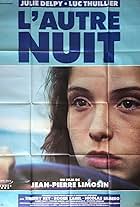IMDb RATING
7.2/10
9.6K
YOUR RATING
As a deadly virus which infects people who have loveless sex sweeps Paris, a lonely pariah attempts to steal a potent antidote, only to fall for the mistress of his partner-in-crime. Is the ... Read allAs a deadly virus which infects people who have loveless sex sweeps Paris, a lonely pariah attempts to steal a potent antidote, only to fall for the mistress of his partner-in-crime. Is the infectious young love the cure to the bad blood?As a deadly virus which infects people who have loveless sex sweeps Paris, a lonely pariah attempts to steal a potent antidote, only to fall for the mistress of his partner-in-crime. Is the infectious young love the cure to the bad blood?
- Awards
- 3 wins & 6 nominations
Leos Carax
- Le voyeur du quartier
- (uncredited)
- Director
- Writer
- All cast & crew
- Production, box office & more at IMDbPro
Storyline
Did you know
- TriviaJulie Delpy says she came out of filming this movie traumatized: "Yes, it was a very difficult shoot. I had a motorcycle accident. In order to make the insurance work, I wasn't taken to the doctor right away. As a result, my leg became gangrenous - one more day and it was amputation. Moreover Leos Carax was not easy. The actress was not easy either. It was a set of things where I was really traumatized when I got out of this movie. It was at the limit where I wondered if I wanted to continue what. It wasn't a pleasant shoot, no", Delpy unveiled without detour, thus engaging in the passage on 'the actress' that was Juliette Binoche.
- ConnectionsFeatured in À la folie, pas du tout: Episode dated 16 November 1986 (1986)
- SoundtracksSimple Symphony Op. 4 - Variation on a theme of Franck Bridge Op. 10
Written by Benjamin Britten
Chandos Records
ed. OXFORD UNIVERSITY PRESS
Featured review
'By the time you finally learn how to live, it's too late.' This brilliant, bizarre, unique film is one more proof that Leos Carax is a genius. The film is so extreme in its technique and imagery that it can be placed in no category. Everything about it is original, even its derivative aspects. Carax is unconventional even when copying or echoing. Sometimes the film is so mannered and arch that it resembles a cartoon strip. But this is playfully misleading. At other times, the film is desperately emotional and heart-rending. It even has hyper-realistic close-ups of microscopic details. The lighting is crisp, hyper-real also. It is so hyper-real that it is utterly surreal. It is designed to oscillate between the real and the imagined constantly, at an ever increasing rate, in order to drive the viewer mad. Soon the viewer will be almost as insane as the director, or so the director hopes, and then the viewer will at last understand. One of the aims of the director is to reduce the viewer to pulp, but not just any pulp: he must be reduced to pulp fiction. Everything is a joke, but also everything is serious. Nothing has only one side to it. The heavily stylized approach is shown in every respect. The sets are carefully colour-coded, with red a major theme, appearing in ties and on walls, in velvet, in blood, often contrasted with black. There is a spectacular, manically exciting sequence where the young hero (Denis Lavant) impulsively runs down the street doing a spontaneous dance to a David Bowie song, and the camera tracks along beside him for a very long time. This kind of 'moving mania' (not unlike a totally berserk form of 'movie mania') has the restless and impassioned insistence upon constant motion that one sees in his next film, 'The Lovers of the Pont Neuf' with the speed boat on the Seine and the fireworks. In the story, also written by Carax, we have so much influence of Andre Breton's novel 'Nadja': love for the impossible woman who is obviously insane in her irresistibly fascinating way, chance encounters, the miraculous erupting in everyday life, impossible visions (when the hero first sees Juliette Binoche on a bus, but cannot make out her features properly through the glass, and yet knows that he loves her already because he 'feels' her). We have the impossibly beautiful Julie Delpy aged only 19, and already in her sixth film, with the unformed face of an infant, and yet her eyes deep pools of passion already, the eyes of a passionate child in that perfect Madonna face. Juliette Binoche is 22 but looks twelve, and her beauty is greater even than that of Delpy's, we cannot take our eyes off her, her calm is the calm of a lake when there is no wind, her face is the face of a lake with no clouds, her beauty is the beauty of a lake in the sunset, the sleekness of her movements is that of a fish glimpsed for a moment as it leaps above the surface of that lake. The story is purposely mocked by the film, its pretext of a thriller plot so absurd that we are encouraged to laugh, realizing there is no plot, there is only life. A virus is spreading: it is killing those who make love without loving, and the vaccine must be stolen. Such is the 'plot'. There are various inside jokes. The director himself plays 'the neighbourhood voyeur, who peeks through the window every night', a fine rebuke of the director against himself. Then there is an earnest conversation is a café where a hardened killer and gangster suddenly breaks off and insists that he sees Jean Cocteau on the other side of the room with his back turned, until he is reminded that Jean Cocteau is dead. There are many intensely stylized shots of the backs of heads. Features and faces are often masked: at one point, Binoche peeks through a hole she has torn in a paper napkin. In another scene, Delpy has a scarf stretched across her face below her eyes for the entire time. There is an interlude in the film in the middle of the night, when all the characters in the story are asleep. So of course, Carax being Carax, he shows them all sleeping in their respective beds in their respective abodes, just to let us see that side of them; the sinister American woman gangster ('the Americaine') has her lipstick all smudged as she lies unconscious, lost in her undoubtedly vicious dream. The young lead is called Alex, which is Carax's real first name (the name Leos Carax being an anagram, the man Leos Carax being an enigma, Alex Dupont being Leos Carax, this film being Alex Dupont being Leos Carax being a voyeur). Everything is original. It is true that some of it verges on farce, saved at the last minute by Carax's brilliance from jumping in front of the Metro just as a man does in the opening sequence. Carax is always about to throw himself and his film in front of the oncoming train. He is always about to throw his train in front of an oncoming film. He is always about to be serious, he is always serious. He is a daredevil. Just as his characters throw themselves into the sky from a plane, parachuting for no evident reason, with Binoche passing out before she can pull her ripcord but being saved by the hero who clutches her in his arms and pulls his for them both (we see shots of them looking down from inside the parachute, and how he filmed those I really cannot imagine), so Carax pulls his own ripcord over and over again, with every minute of the film, and saves it repeatedly from tumbling to earth, with the awe-inspiring audacity of his manic, uncontrollable creativity.
- robert-temple-1
- Sep 8, 2009
- Permalink
- How long is Bad Blood?Powered by Alexa
Details
- Release date
- Countries of origin
- Official sites
- Language
- Also known as
- Mauvais Sang
- Filming locations
- Rue Emile Richard, Paris 14, Paris, France(crossing the American Lady on the way to the airfield)
- Production companies
- See more company credits at IMDbPro
Box office
- Gross US & Canada
- $40,988
- Opening weekend US & Canada
- $8,482
- Dec 1, 2013
- Gross worldwide
- $70,105
Contribute to this page
Suggest an edit or add missing content




